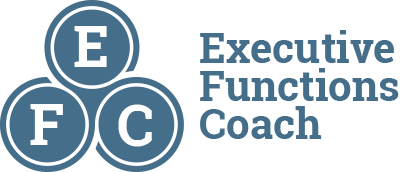Unleashing the Power of Active Learning Strategies
Are you tired of conventional study methods that leave you feeling overwhelmed and unprepared for exams? It’s time to embrace a game-changing approach: Active Learning Strategies. These techniques go beyond mere memorization, transforming the learning process into an engaging and effective experience. By incorporating active studying strategies, you can elevate your academic performance to new heights.
Strategies for Success
To kickstart your active learning journey, it’s crucial to understand the distinction between passive and active learning. Passive learning involves simply absorbing information, often through lectures or reading without active participation. On the other hand, active learning demands your engagement, requiring you to think, analyze, and apply knowledge actively.
The Dynamic Duo: Passive and Active Learning
Many students unknowingly limit their potential by relying solely on passive learning. By integrating both passive and active learning methods, you create a powerful synergy that enhances comprehension and retention. Lectures and reading provide a foundation, while active learning techniques like group discussions, problem-solving, and practical applications solidify your understanding.
Mastering Active Learning in Higher Education
As you venture into higher education, the significance of active learning amplifies. The complexity of subjects demands a more immersive and interactive approach. Embrace collaborative learning environments, engage in hands-on activities, and leverage technology to enrich your understanding. The shift from passive to active learning is the secret weapon for excelling in higher education.
The First Step: Incorporating Active Learning Strategies
Now that the groundwork is laid, let’s delve into practical active learning strategies you can implement immediately. One powerful approach is the Feynman Technique, named after the Nobel Prize-winning physicist Richard Feynman. It involves simplifying complex concepts by teaching them to someone else. This not only reinforces your understanding but also exposes gaps in your knowledge. This method can be best used in study group settings, so if you feel like a friend knows more than you, study with them! This helps everyone gain a higher understanding of coursework material.
Another effective strategy is active summarization. Instead of passively reading and underlining, actively engage with the material by summarizing key points in your own words. This process enhances comprehension and reinforces the information in your memory. By translating complex ideas into simpler terms, you solidify your grasp on the subject matter.
Learning in Action: Real-World Applications
Active learning extends beyond theoretical frameworks. Consider incorporating case studies and real-world examples into your study routine. This not only makes the material more relatable but also sharpens your analytical skills. Whether you’re studying economics, biology, or literature, finding practical applications enhances your ability to connect theory with reality.
For instance, if you’re studying business management, actively engage in simulations or analyze real-world business cases. Apply theoretical concepts to practical situations, and discuss the potential outcomes with peers. This hands-on approach not only reinforces your understanding but also prepares you for the challenges you may face in your future career.
The Advantage in Exam Preparation
As exam season approaches, traditional cramming may seem like a tempting shortcut. However, active learning proves to be a more effective and sustainable approach. Implement strategies such as flashcards, self-quizzing, and teaching concepts to peers. These methods reinforce your memory, ensuring that information is not just temporarily retained but deeply ingrained. Cramming will only help you retain information in the short term, so it may help you make it through the quiz, but none of the information will be retained by the time you reach final exam season.
Create a study schedule that incorporates active learning techniques regularly. Break down your study sessions into manageable chunks, allowing for active engagement and reflection. By consistently practicing active learning, you build a strong foundation of knowledge that will serve you well during exams and beyond.
Active Learning in the Real World
To witness the practical impact of active learning, let’s explore how students have seamlessly integrated these strategies into their academic pursuits.
Sarah, a biology major, recognized the value of active learning in her studies. By immersing herself in hands-on experiences during labs, forming study groups to discuss complex topics, and utilizing visual aids, she not only excelled in exams but also developed a profound understanding of intricate biological concepts.
In the realm of history, David, a dedicated student, adopted active learning through engaging in debates and discussions. This dynamic approach not only made the learning process enjoyable but also deepened his understanding of historical events from various perspectives. Beyond textbooks, active learning left a lasting impact on David’s academic performance, providing a holistic understanding of the subject matter.
These instances highlight how active learning goes beyond theoretical knowledge. It’s about actively engaging with the material, embracing discussions, and applying concepts in a real-world context. Whether you’re studying the sciences or humanities, incorporating active learning strategies can significantly enhance your grasp on the subject matter.
Embracing Change: Your Path to Straight A’s
In conclusion, active learning strategies are your secret weapon for achieving straight A’s. Break free from the constraints of passive learning, embrace the dynamic duo of passive and active techniques, and navigate the challenges of higher education with confidence. As you embark on this empowering journey, remember: active learning is not just a study method; it’s a mindset that propels you toward academic excellence. Start today, and let your grades reflect the unstoppable force of active learning. Your commitment to engaging with knowledge actively will not only enhance your academic success but also shape your lifelong learning journey.


